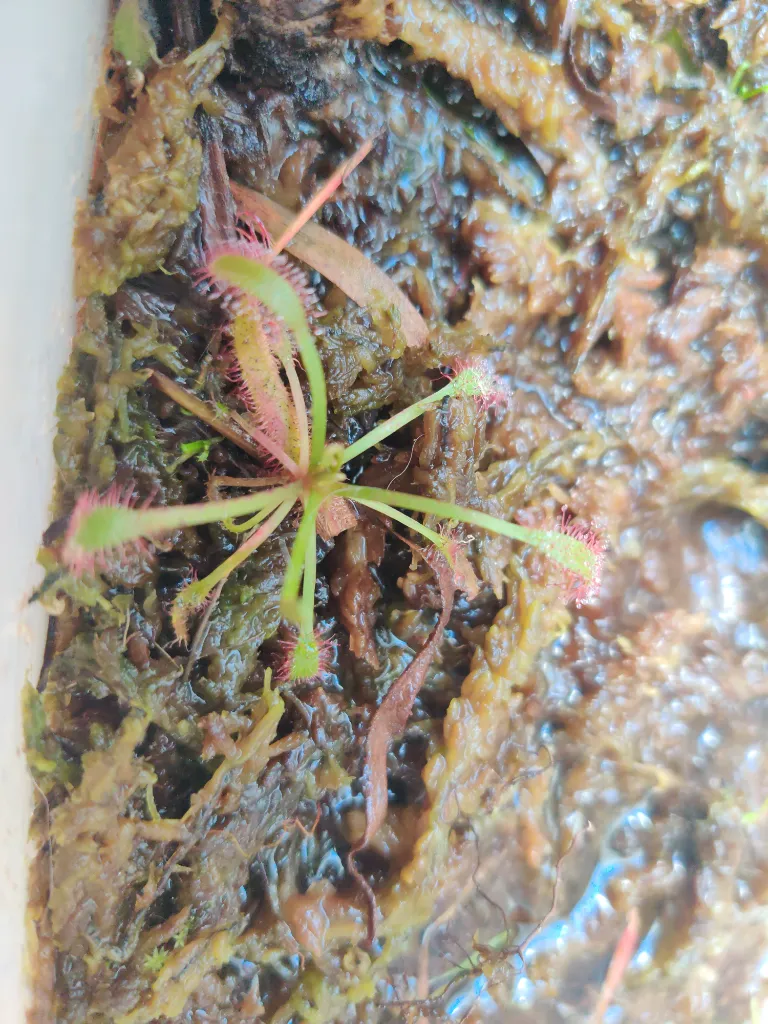Well, they will never be trees! And it does take about 5 to 6 months before the trimmings sprout little plants. But that's no reason not to do it!

Today, I was out looking at my carnivorous plants and seeing which ones need to be repotted, and I saw something I started about 5 months ago when the weather was still warm.
I went to put some water in a long narrow pot that I had filled with moss. It is a place to throw drosera trimmings. The last time I trimmed some of the lower branches off of the drosera plants, I had tossed all of the cut branches into this pot and I've been keeping it moist for that many months.
When I looked into that pot, I saw hundreds of little plants sprouting new growth. The way it works - the new plants don't grow roots. They sprout from the main area of a leaf that has fallen or, in this case, was cut off. They begin to grow using the meat of the branch/leaf as energy in order to make a new plant. The roots come when that leaf is all used up.
Look at all the little plants coming out of one leaf! (Cover photo). Only the biggest one in that photo would possibly survive in its own pot. And that plant is the smallest of all that I transplanted today.
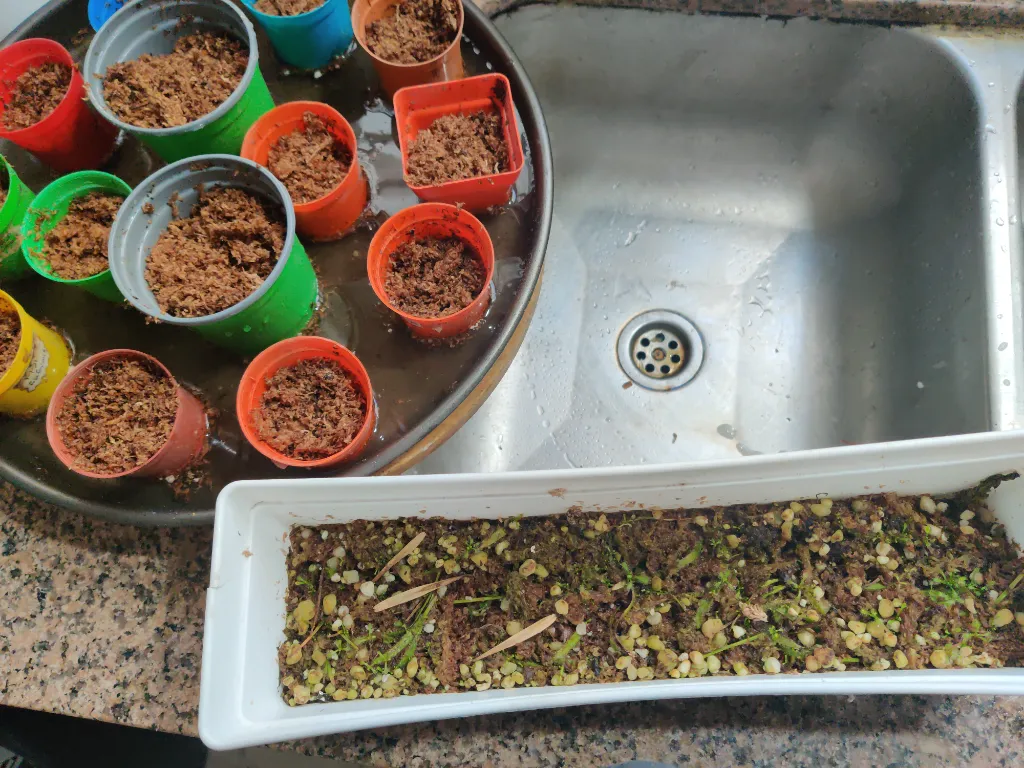
Here is my set up to do the job. I have a lot of little pots because I do this often, several times per year. I trim and add moss to the mature plants when they need it and I get rid of the branches that are closest to the 'ground' when I do.
You can see all the pots ready to receive new baby plants, two slightly larger. Those are for two new plants that I found growing along side their parents. We don't want too many plants sharing the same pot. If the branches touch the moss and stay there long enough, new plants will grow from them, the same as they do from branches trimmed off. People say that carnivorous plants are hard to care for, but if you follow some simple rules, they are very harty. They must have only distilled or rain water, and no normal soil - only moss, which has no nutrition in it. These guys get their nutrution from the digestion of whatever they catch.
The white pot is the one that is filling up with new life. I will be giving the biggest ones a pot of their own today.
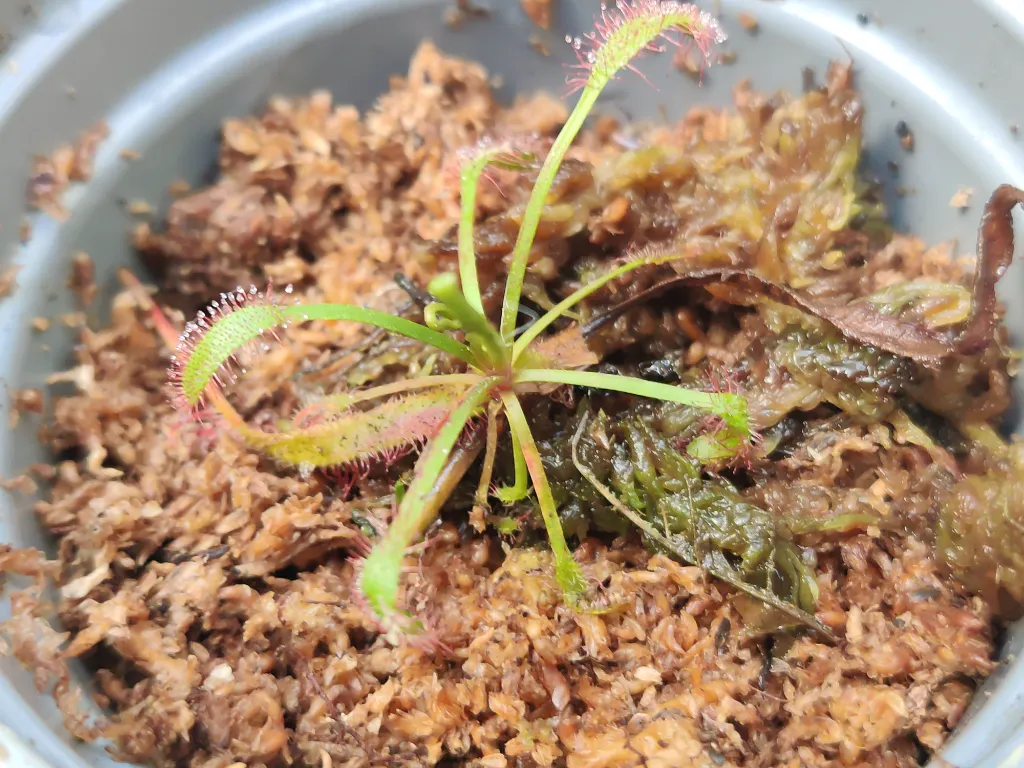
Let's do one of the larger ones first. This one has grown roots after its mother leave rotted away under it.
I take a curved nose, long nose pliers and pinch the moss under the center of the plant and lift. The roots of this plant are only a centimeter or two long. I then press that moss down into the pot where it will live from this day forward.
All of the pots were filled with moist moss. I had prepped them all with perlite at the bottom and then minced moss at the top. I put all the pots on a pizza pan and let them sit for hours with distilled water - filled as high as I could get it. You should never just put a plant in dry moss. It takes a long time to hydrate the dry stuff.
It is hard to tell the size of this plant but the pot it now lives in stands about three inches high and two and half inches around. For the little plants, I will have a folded dollar bill so that you can get an idea of their sizes.
One down and one to go - it was just a rinse and repeat thing so I will get on with the other babies.
Here is the set up again, a bit closer. I have a distiller that I run on cold days to warm up the house. I then mark jugs clearly with the word "Distilled" There is a fan at the top of the disteller which is great for drying leaves that are used for tea or smoke, if you get my drift. Speaking of smoke, I was able to propagate new ganja plants by poking a scure in the dirt, then taking one young leaf and cutting it on an angle, shoving it down into the dirt and waiting. They propagate quite nicely.
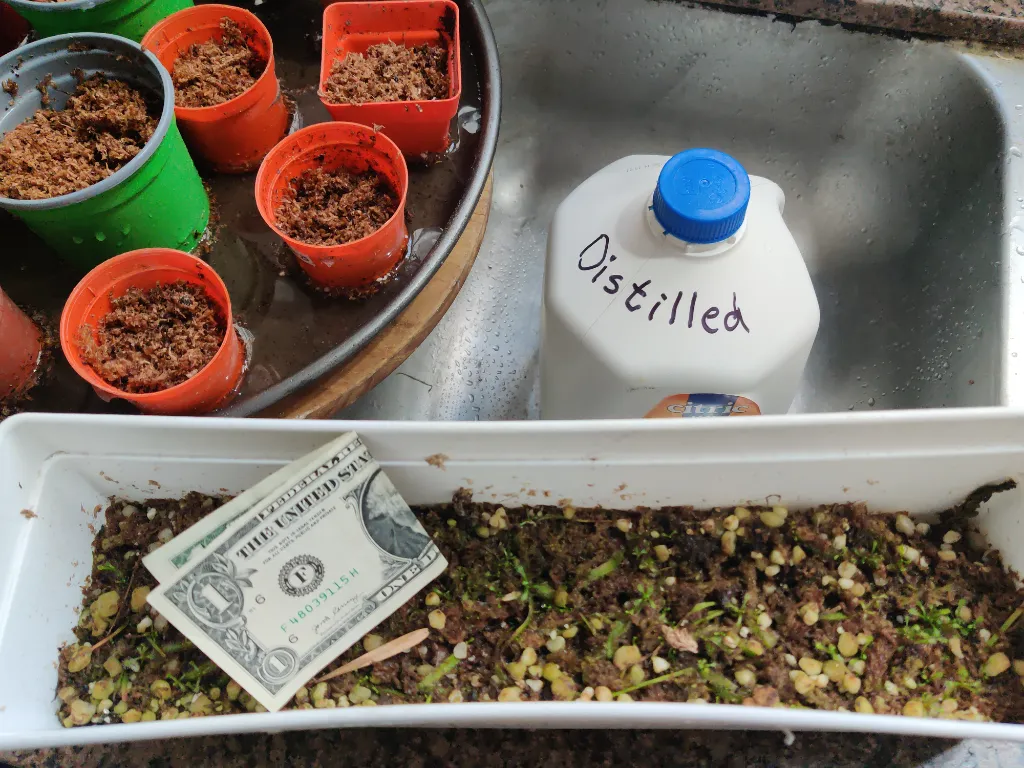
money for size context
Selecting which little droseras to pot, is easy. They should have two to three little leaves with droplets of their digestive fluid already formed. If they are attached to the parent leaf, it must be cut on both sides of the new growth. Bring that little rectangle of the parent leaf with each plant to the new pot. It acts like the roots of the new plant until it can grow some of its own. When the plant has taken all it can from its parent leaf, it will catch bugs and grow its roots into the moss.
When transferring it to the pot, you want to make sure that its little leaves don't touch anything, robbing the plant of its sticky digestive fluids. Without those juices, it will not be able to attract bugs and catch them.
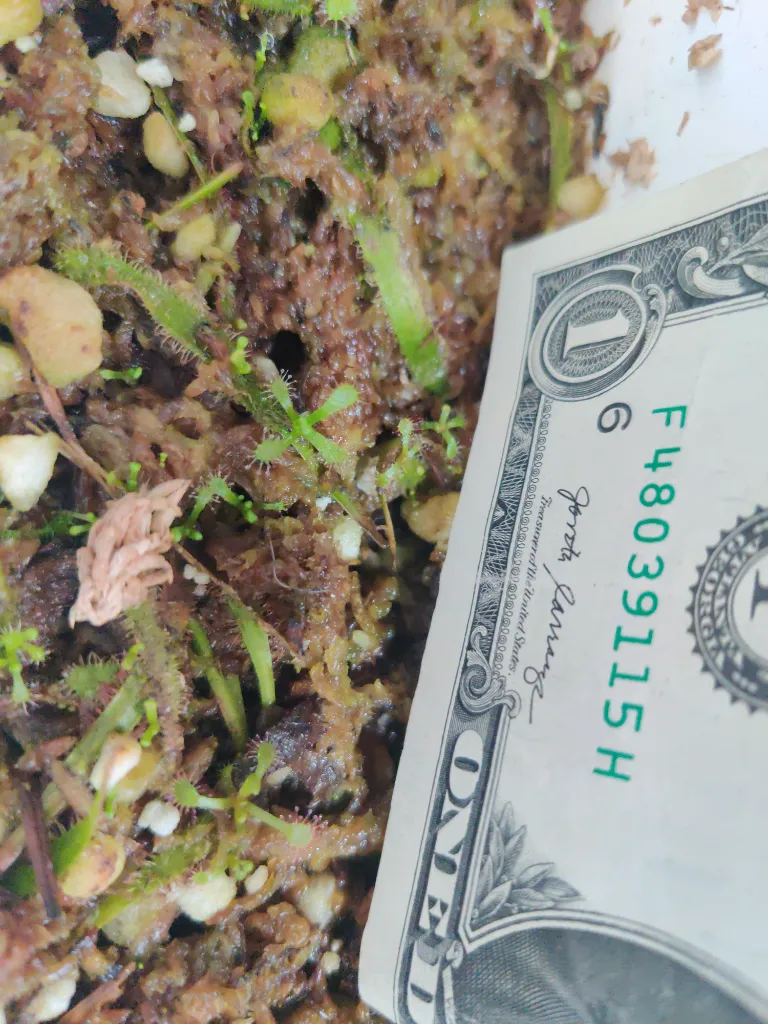
There are three baby plants in the above photo that I would transplant right now. Can you guess which ones?
I actaully did tranplant them right after taking the photo.
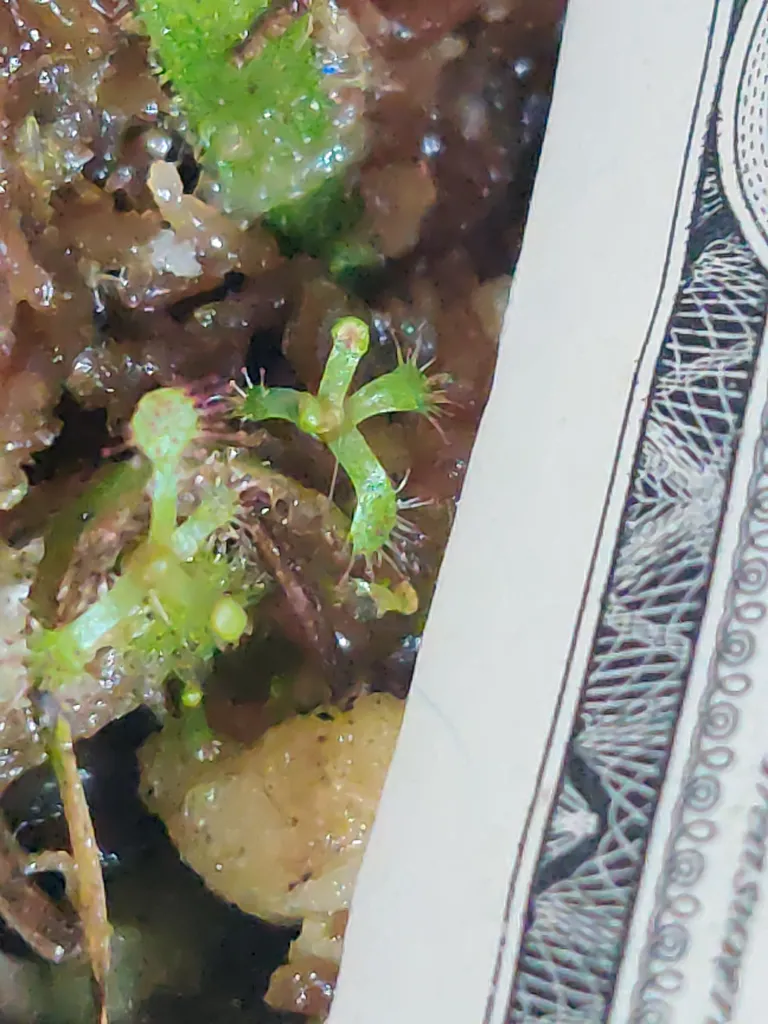
The above shows a couple more after I moved our size context. These would have a lesser chance of survival if they had to survive on just moss and distilled water. I would retake this photo if it were not night time. One thing I learned about posting drosera pictures. You can ony get one leaf in focus at best.
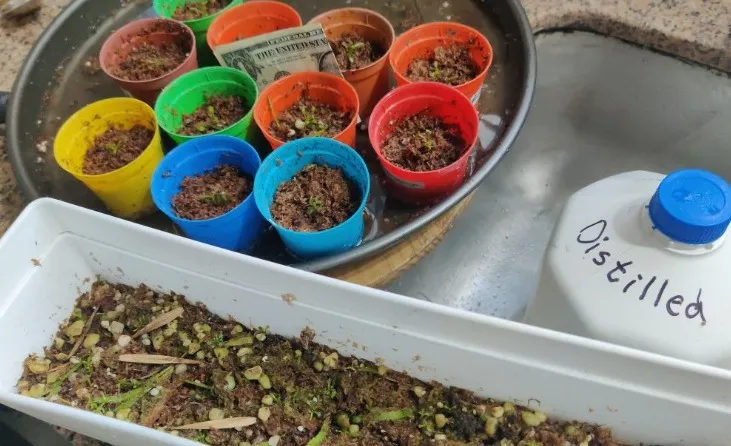
I did about 15 newly potted Drosera Capensis plants, aka bug catchers, today. Two were bigger ones and another two were of other species. When these get a bit bigger they can fetch eight to ten dollars each while still in this size pot. I get a lot more than that for the mature plants.
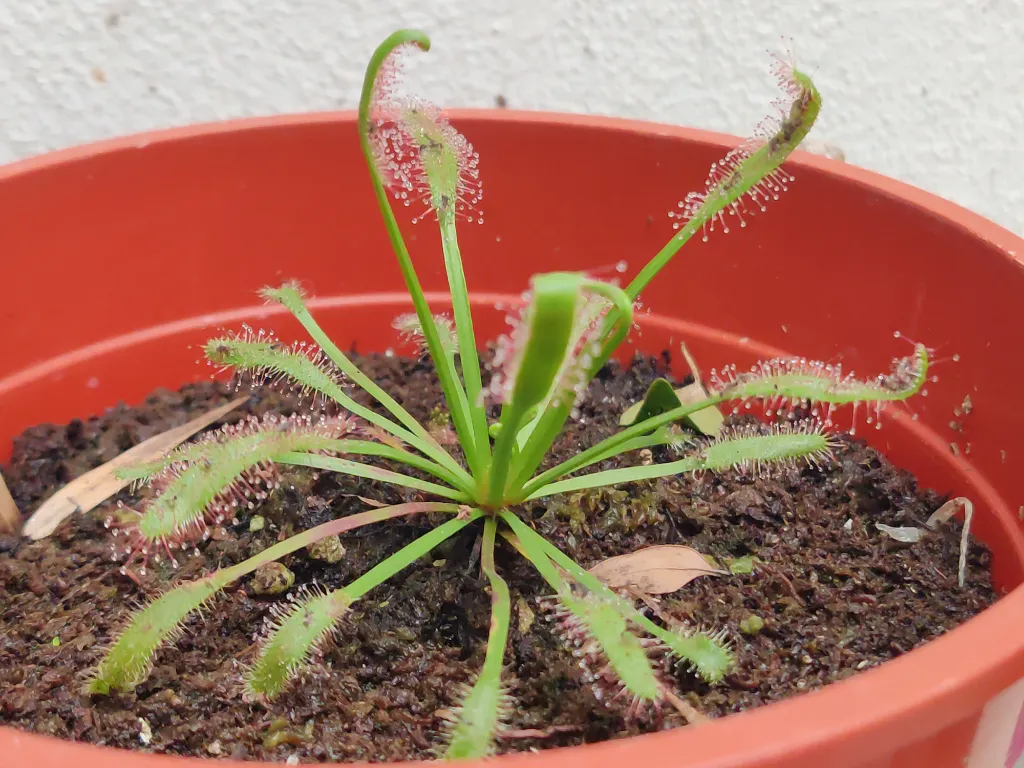
I will leave you with a mature, medium size one of these. The babies are nice but the big ones can really eliminate all your bug problems. These are wonderful plants! They are beautiful and useful for getting rid of mosquitoes and other pests - it's better than just smacking them when they land on you. Those pests can serve as food for these plants.
I hope you liked this post.
My next post: Problems with the potatoe tower. Oh no!
